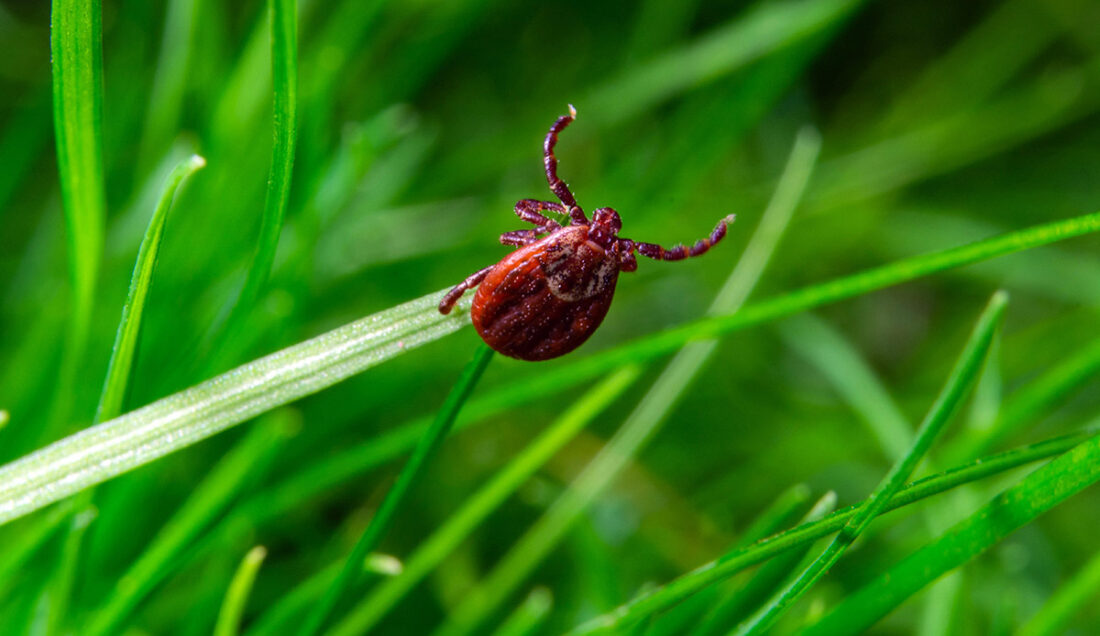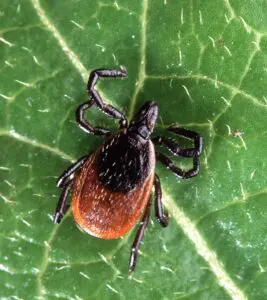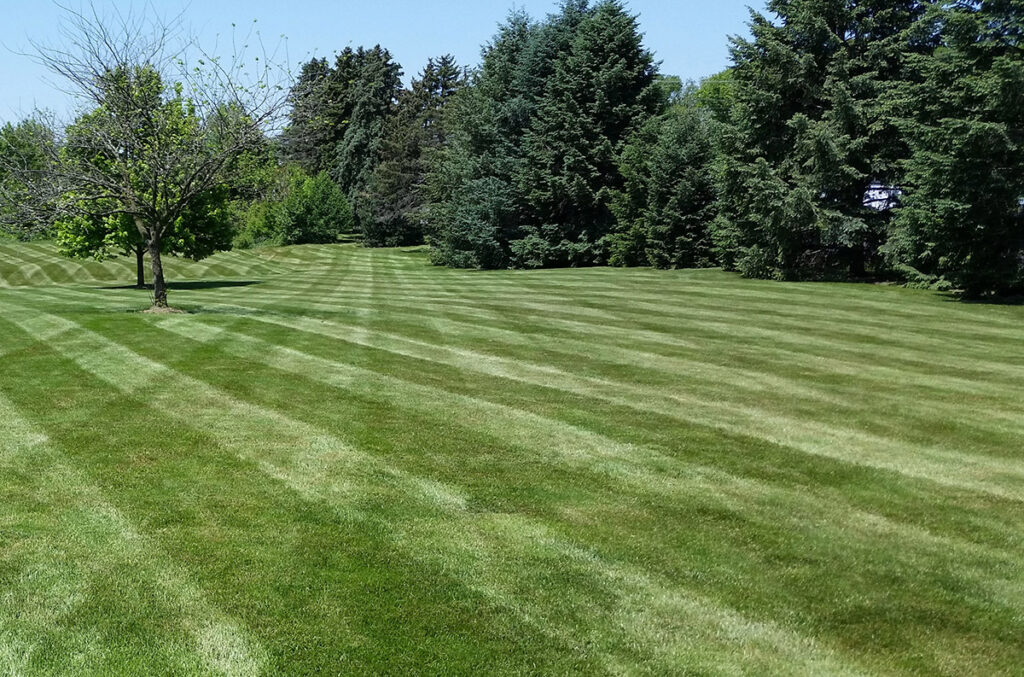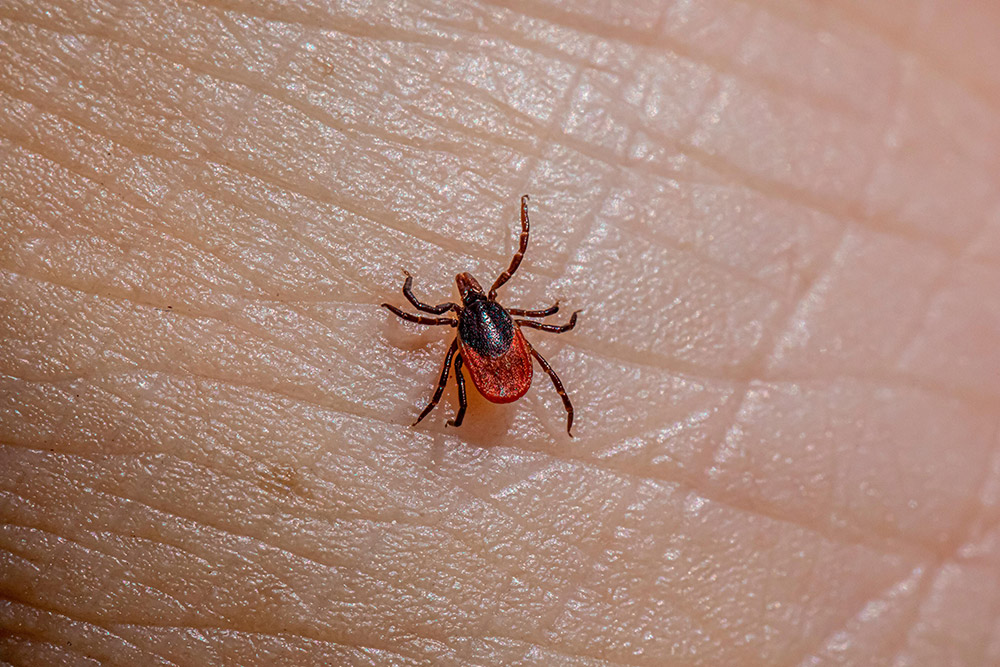
This guide covers how homeowners and businesses can get rid of ticks in the lawn with effective, science-backed methods that allow you to enjoy your outdoor spaces worry free.
Why Tick Pest Control Matters
Ticks are more than just a nuisance, they pose serious health risks to humans and animals. As carriers of Lyme disease and other dangerous infections, their presence in your yard or business can be a significant concern. Whether you’re a homeowner worried about your family’s safety and looking to prevent tick bites, or a business owner protecting your property, tick pest control is something you want to prioritize in Central PA.
Understanding Ticks: The Silent Threat in Your Yard

Ticks are resilient pests that thrive in wooded areas, tall grass, and shaded environments, which makes Central PA a prime environment for ticks to thrive. Tick season in our area is typically early spring and throughout the warmer months. The most common types include:
- Black-legged tick (Deer tick) – A known carrier of Lyme disease.
- American dog tick – Can transmit Rocky Mountain spotted fever.
- Lone star tick – Recognizable by its white spot and aggressive biting nature.
These pests are not just an issue for forests and hiking trails. They live in your yard and around businesses, where they latch onto unsuspecting humans and pets.
“Of all of the lawn pests we treat at JHL Turf Pros, ticks are one of the top concerns for our clients. Seeing as they pose a serious health risk, it’s imperative we not only keep them out of your yard, but from commercial properties as well,” said JHL Turf Pros Turf Manager, Andy Zook.
Where Do Ticks Live? The Hotspots for Tick Activity
Ticks are most active in warm, humid months, but can survive in colder climates by hiding in leaf litter and soil. The most common tick activity zones include:
- Overgrown lawns with tall grasses and weeds
- Piles of leaves and wooded areas
- Around fences, stone walls, and shady gardens
- Near businesses with landscaping that includes tall grass or mulch
- Along the edges of lawns, especially where the grass meets wooded zones
How to Get Rid of Ticks: Prevention and Control Measures
The best way to eliminate ticks in your yard is through a combination of prevention and treatment. Here are some best practices for outdoor pest control to prevent ticks in the first place.
1. Keep Your Yard Tidy
Ticks love dense vegetation. Implement these control measures for preventative maintenance:
- Mow your lawn frequently – Short grass reduces hiding spots.
- Remove leaf litter and yard debris – This eliminates breeding grounds.
- Trim bushes and trees – Allow sunlight to penetrate shaded areas.
- Create tick-free zones – Use mulch or gravel to form barriers between wooded areas and lawns.
2. Use Effective Tick Treatments
There are various tick treatments available for homeowners and businesses:
- Tick sprays – Natural or chemical sprays target tick populations.
- Granular tick pesticides – Spread across lawns and high-risk zones.
- Organic solutions – Like cedar oil, which repels ticks naturally.
- Tick tubes – These deliver tick-killing treatments to mice, a common tick carrier.
For more information on proper lawn care maintenance to best prevent pests, like ticks, in our area, download this guide: 6 Essential Lawn Care Tips for Central PA Residential & Commercial Properties.
3. Protect People and Pets
- Wear long sleeves and pants when in high-risk areas.
- Check for tick bites after spending time outdoors.
- Use tick repellents with DEET or permethrin.
- Bathe pets regularly and use vet-approved tick preventatives.

How to Kill Ticks in the Yard: Professional Tick Control
While DIY treatments can help, professional lawn pest control services ensure long-term protection. Here’s how experts approach how to kill ticks in the lawn and surrounding areas:
1. Barrier Treatments
At JHL Turf Pros, we apply effective tick sprays to high-risk areas, like fence lines, shrubbery, and wooded areas. This reduces tick populations significantly.
2. Integrated Pest Management (IPM)
A sustainable approach that includes:
- Identifying tick breeding sites and tick larvae.
- Reducing hosts like rodents and deer.
- Applying targeted tick treatments.
3. Commercial Business Tick Management
- Synthetic or natural tick control solutions to ensure employee and guest safety.
- Routine tick inspections of lawn areas.
- Tick-resistant landscaping to minimize tick populations.
Find out more about how to effectively eradicate ticks with professional lawn tick treatments from JHL Turf Pros.
Why DIY Tick Treatments Often Fall Short
Many homeowners turn to DIY solutions like essential oils, tick tubes, and insect repellents. While these methods may reduce tick activity temporarily, they often fail to address the root of the problem. Here’s why working with a professional service, like JHL Turf Pros, can provide more peace of mind:
- Long-Lasting Results: Unlike DIY treatments that require frequent reapplication, our professional solutions provide sustained protection.
- Broad-Spectrum Control: Our treatments eliminate ticks and other pests, such as fleas and grubs, for comprehensive pest control.
- Expert Knowledge: With decades of experience, we know which products and strategies are most effective for tick control in Central PA.
One of our clients, David Wendel said, “JHL Turf Pros’ attention to detail and quality of work is superior to any other service we’ve ever used. They always exceed our expectations. If there is something we need, they respond promptly and it is done right, every single time.”

What to Do if You Get Bitten
If you find a tick attached to your skin:
- Use fine-tipped tweezers to grasp the tick as close to the skin as possible.
- Pull upward steadily, without twisting.
- Disinfect the area with rubbing alcohol and wash your hands thoroughly with soap and water.
- Save the tick in a container or a sealed bag in case it needs testing for Lyme disease.
- Monitor for symptoms such as fever, rash, or joint pain.
The Impact of Tick Populations on Businesses
Ticks aren’t just a backyard problem. Businesses with outdoor seating, landscaped areas, or play areas need tick control strategies to:
- Keep customers and employees safe.
- Maintain a tick-free environment for socializing and recreation.
- Prevent liability issues related to tick-borne illnesses.
Take Action Against Ticks Today
From homeowners to business owners, effective lawn tick control is essential. By using preventative landscaping, tick treatments, and professional pest control, you can create a safe and tick-free environment.
